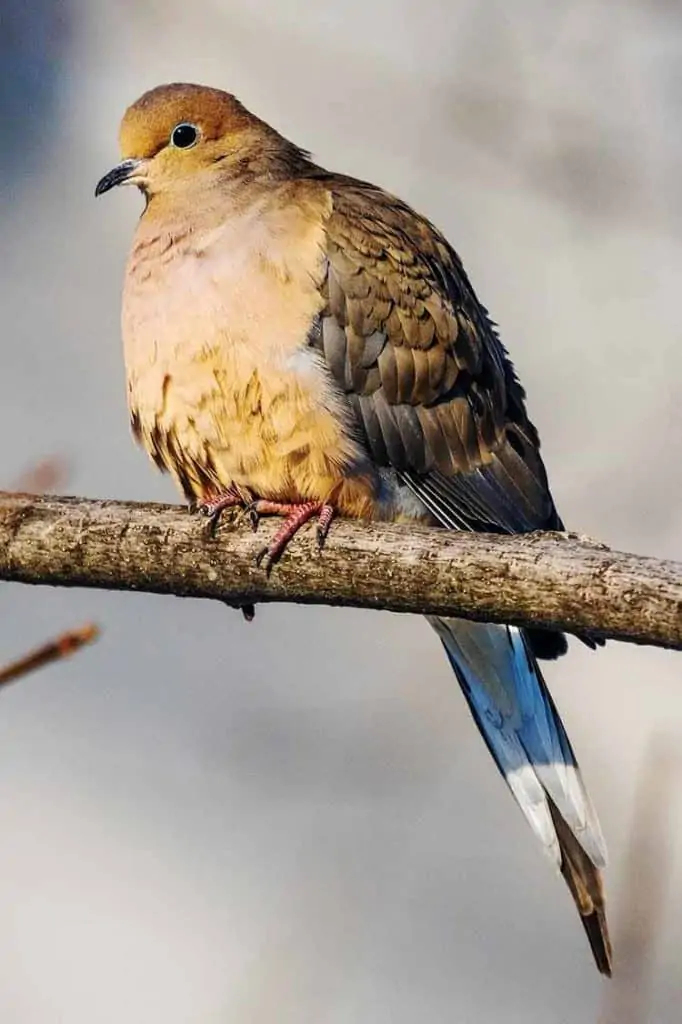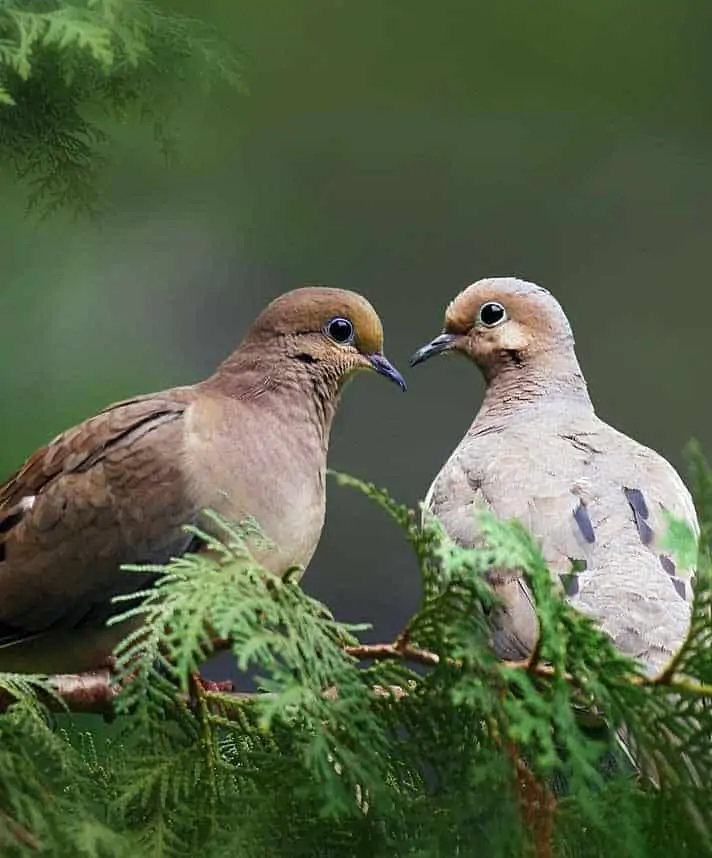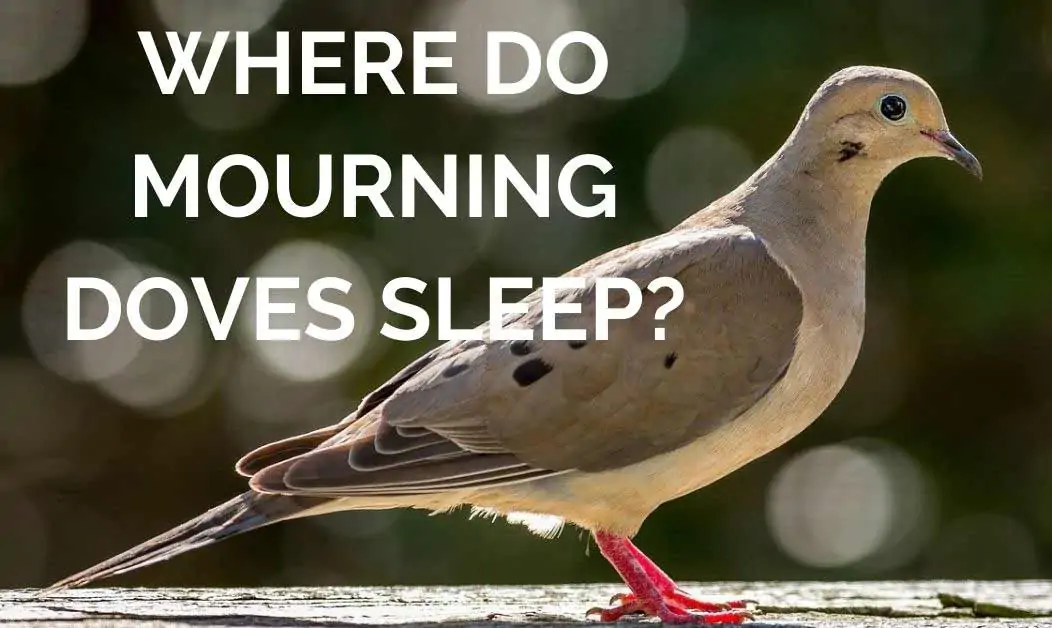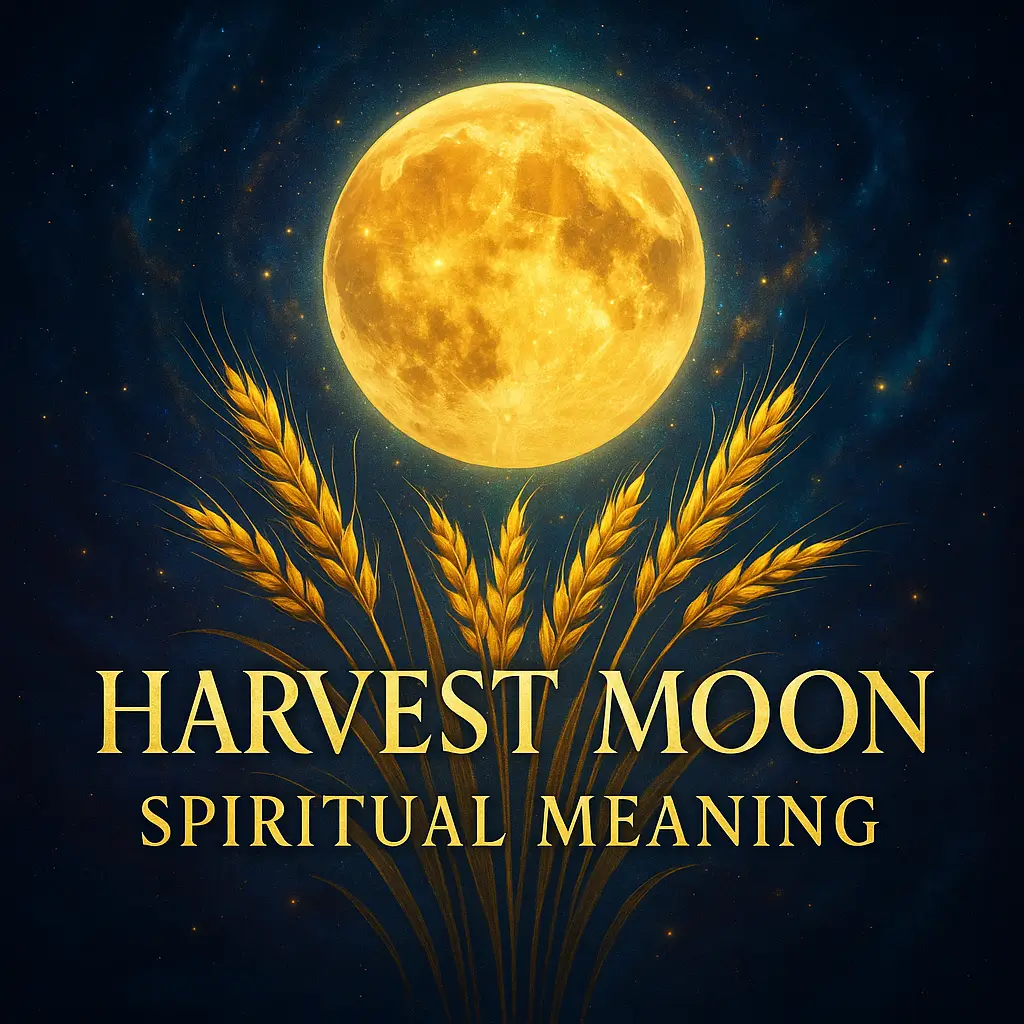“Where do mourning doves sleep?” you might wonder as you spot one in your backyard. These serene birds have a unique approach to rest, often choosing places you’d least expect.
In this article, we’ll unravel the mystery of their nocturnal habits, revealing surprising facts that will change how you see these common yet fascinating creatures.
They sleep in trees, but there’s more to the story. Stay with us as we delve into the intriguing world of mourning doves.

A mourning dove’s beauty is an understated one: the colors of its feathers ranging through various shades of gray and drab violet, often with a striking splash of turquoise around the eyes.
Jonathan Miles
Table of Contents
Key takeaways
- Mourning doves prefer to sleep in trees or on high perches to avoid predators.
- They exhibit a unique sleeping position, with their head resting between their shoulders, close to their body.
- Mourning doves form strong pair bonds and often sleep next to their mates during the mating season.
Where Do Mourning Doves Sleep
Where Do Mourning Doves Sleep: A Closer Look
Mourning Doves, known for their tranquil demeanor, face unique challenges when it comes to sleeping. Their sensitivity to light makes nighttime rest a delicate affair. Despite their limited vision, they rely heavily on their acute sense of sound to perceive their surroundings. Their sharp-edged beaks play a crucial role in their survival, aiding in food consumption and self-defense against predators like hawks. Males also employ their beaks in territorial disputes and mate selection. When at rest, a dove’s wings envelop its head, providing a cloak of invisibility until dawn.
The Sleeping Habits of Mourning Doves
Mourning doves, like other members of the dove family, exhibit a strong bond with their mates. Throughout most of the mating season and egg development, they sleep side by side. Outside the breeding season, they roost in deciduous trees or conifers. When the time for mating and nesting arrives, they select a lifelong mate to share their nest.
Sound of the Mourning Dove Call
Roosting and Predators
Mourning Doves prefer high perches or trees for their slumber, often flying to roosts at dusk to evade nocturnal predators. Their inconspicuous nature during the day is due to their tendency to spend most of their time resting on tree branches or nestled among leaves. When not in flight, mourning doves rest with their wings tucked under them. Interestingly, like many ground-dwelling birds, mourning doves possess a poor sense of smell, a trait that aids in their concealment from predators during sleep.
Morning Rituals
As dawn breaks, mourning doves may engage in a behavior known as “mobbing“. They gather together for safety before embarking on their daily quest for food and water sources. This communal behavior underscores the social nature of these birds, adding another layer to our understanding of their fascinating habits. For more insights into the world of mourning doves, visit Birdfact.
Unique Sleeping Position of Mourning Doves
One of the most intriguing aspects of mourning doves is their unique sleeping position. Unlike many birds, mourning doves sleep with their head resting between their shoulders, close to their body.
This distinctive posture, combined with their wing placement, provides an added layer of protection and warmth during their rest. This behavior not only contributes to their survival but also adds to the mystique of these fascinating creatures. It’s another testament to the remarkable adaptations of mourning doves, further enhancing our appreciation for these gentle birds.
Mourning Doves: Masters of Camouflage
The mourning dove is the most common bird in North America, but their secretive nature often keeps them hidden from sight.
Preferred Habitats
They can often be found in open fields, scattered trees, and woodland edges. They only roost during wintertime in woodlots where they are safe from predators. Mourning doves feed on the ground of grasslands, agricultural fields, backyards, and roadsides with their favorite food being seed-bearing plants such as grains or wildflowers that have fallen to the earth’s surface.
Behavior and Feeding Habits
Mourning Doves are a gentle species that feed on the ground and in the open – however, they tend to be shy birds that prefer areas with trees or shrubs for cover. They peck or push aside ground litter, but don’t scratch at it to find food as other birds do.
Mating Rituals and “Cooing Perches”
Males have favorite “cooing perches” they defend from other males while waiting for their mates to return with food; females will eventually join them there once ready. Members of a pair preen each other’s feathers around his neck during courtship rituals before moving onto more intimate ones like grasping beaks (not unlike kissing) and bobbing heads up and down rhythmically together. See the video below:
How Do Mourning Doves Sleep?
Mourning Doves have a distinctive sleep pattern that differs from other birds. Their head rests between their shoulders, close to the body rather than tucked under feathers on its shoulder as most birds do. This could be a result of their lack of an oil gland that keeps other birds warm.
Table Top 15 interesting facts about Mourning dove sleeping behavior
| Category | Interesting Fact about Mourning Dove’s Sleeping Behavior |
|---|---|
| Sleeping Position | Mourning doves sleep with their head resting between their shoulders, close to the body. |
| Sleeping Location | They prefer to sleep in trees or on high perches to avoid predators. |
| Activity Cycle | Mourning doves are primarily diurnal, meaning they sleep at night and are active during the day. |
| Mating Behavior | They often sleep next to their mates during the mating season and egg development. |
| Predator Avoidance | Mourning doves fly to roosts at dusk to avoid nocturnal predators. |
| Daytime Behavior | They are inconspicuous during the day, spending most of it resting on tree branches or nestled among leaves. |
| Wing Position | Mourning doves rest with their wings tucked under them when not flying. |
| Sense of Smell | Like many ground-dwelling birds, mourning doves have a poor sense of smell which helps keep them hidden from predators while sleeping. |
| Morning Behavior | Mourning doves may gather together for safety in the morning before starting off again in search of food and water sources. |
| Roosting Preference | Mourning doves have a preference for roosting in dead trees and farming sites. |
| Beak Usage | Mourning doves use their sharp-edged beaks for several purposes including breaking up food particles and defending themselves against predators. |
| Monogamy | Mourning doves are monogamous and often choose a single mate for life. |
| Light Sensitivity | Mourning doves have a difficult time sleeping during the night because of their sensitivity to light. |
| Nesting Behavior | Mourning doves make nests out of twigs while they’re sitting on them, unlike most other bird species that build their nests beforehand. |
| Crepuscular Behavior | Some mourning doves are crepuscular, meaning they are most active during twilight (dawn and dusk). |
Mourning Doves in Pairs
A fascinating aspect of mourning doves is their tendency to form strong pair bonds. But do they sleep in pairs? The answer is yes, especially during the mating season.
Mourning doves are known for their monogamous nature, often choosing a single mate for life. This bond is so strong that they not only spend their days together but also share their roosting spots at night.
Interestingly, mourning doves have a preference for roosting in dead trees and farming sites. These locations provide them with the safety and seclusion they need for a peaceful night’s rest.
The sight of a pair of mourning doves nestled together on a branch at dusk is a testament to their enduring bond.

Why is it Called Mourning Dove?
The mournful call of the Mourning Dove is a common sound in North America. The bird’s cooing, usually with two-syllable notes, often sounds like “coo-wheet” or “coo-whet.” It has been suggested that these calls are used to establish territory and attract mates. Some people find the birds’ song pleasant while others consider it an annoyance.
Mourning Doves can be found throughout North America from coast to coast and as far north as Alaska and Canada. They live in a variety of habitats including wetlands, forest edges, and meadows where they feed on seeds, fruits, leaves, and insects for food.
“Did you know that the ‘mourning’ in mourning dove is steeped in ancient lore? It was once believed that sighting these birds foretold an impending death, thus earning them their melancholic moniker.
Yet, these birds have graced our skies since prehistoric times, their symbolism evolving as we began to understand death as a natural, even commonplace part of life.
Interestingly, some suggest that the name ‘mourning dove’ is derived not from any particular behavior, but from its plaintive coo, which, when heard up close, sounds eerily like a sorrowful ‘mourning do-o-o’.
This name has stuck, perhaps because these birds are often sighted during times of grief, their presence a poignant backdrop to our human rituals of mourning.”
Where Do Birds Sleep
Nesting vs. Roosting
The difference between sleeping and roosting is quite confusing to most people. Roosting generally refers to communal birds that always remain together in large flocks such as Crows or Starlings, but it really just means a period of inactivity similar to sleeping.
All bird sleep- they have periods of “quiet” sleep during which they peek at intervals; however, their eyes stay closed for the majority of time spent asleep and are considered active when awake because there’s no way you can tell if one might be pretending with all those feathers covering up its eye movements!
Many birds roost at night. They may perch on a branch or tree, climb into the fork of two branches to create an enclosed space for themselves, or even use their claws and beak to pull leaves together in order to form what is called a “roofless nest.”
Many different types of birds are known as nesters such as wrens, chickadees, martins, gulls and more.
In contrast with dove-like birds that make nests out of twigs while they’re sitting on them—most other species typically build their nests beforehand by gathering material like grass and feathers using their feet or bill (sometimes both). Some bird species will only sleep during the daytime because they simply cannot survive if they sleep at night. They are called crepuscular animals and they include owls, bats, opossums, and more.
FAQs
What is the Sleeping Preference of Doves – Trees or Ground?
The sleeping preference of doves is primarily in trees or on high perches. This is a safety strategy they employ to protect themselves from predators during their resting periods. While they are capable of resting on the ground, it is generally avoided due to the increased risk of predation. Therefore, if you observe a dove at rest, it is more likely to be in a tree or on a high perch rather than on the ground.
Do Mourning Doves Come Out at Night?
Mourning doves are primarily diurnal creatures, which means they are most active during the day. Nighttime is typically reserved for roosting or sleeping, providing them with the necessary rest for their daytime activities. While they have the capability to be active at night, it is not their usual behavior. Therefore, it is less common to see mourning doves out and about once the sun has set.
Do Doves Sleep on the Ground at Night?
Doves, in general, avoid sleeping on the ground at night. The risk of predation is significantly higher on the ground, which makes it a less safe option for these birds. Instead, doves prefer to find higher perches or trees for their nighttime rest. This behavior is a survival strategy that helps protect them from potential threats during their vulnerable resting periods.
How Long Do Doves Sleep?
Doves, like many birds, follow a diurnal pattern, meaning they are active during the day and rest at night. The duration of their sleep can vary but typically aligns with the cycle of daylight and darkness. On average, doves may sleep for about 10 to 12 hours per night, although this can be influenced by factors such as season, weather, and environmental conditions. It’s important to note that their sleep is interspersed with periods of alertness to ensure their safety from potential threats.
Do Mourning Doves Lay Down?
Mourning doves, like most birds, do not typically lay down. Instead, they rest and sleep while perched on branches or other elevated surfaces. Their feet lock onto the perch, allowing them to maintain their balance even during sleep. This posture helps them stay alert to potential threats and enables quick takeoff if necessary. While they may occasionally be seen on the ground during feeding or nesting, they usually do not lay down for rest or sleep.
Can Doves See at Night?
Doves, including mourning doves, have relatively poor night vision. They are primarily diurnal birds, meaning they are active during the day and rest at night. While they can perceive some movement and light changes in low-light conditions, their ability to see clearly and navigate effectively is significantly reduced at night. Therefore, they typically roost or sleep during the night and reserve their activities for daylight hours when their vision is optimal.
Do Doves Sleep With Their Eyes Open?
Doves, like many birds, have a unique way of sleeping. They can enter a state of semi-sleep where one eye is open and one half of their brain is awake, while the other eye is closed and the other half of the brain is asleep. This allows them to rest while still being alert to potential threats. However, when in a safe and comfortable environment, doves will sleep with both eyes closed.
Do Doves Migrate?
Mourning doves, a common species of dove, are partial migrants. In North America, those living in the northern regions typically migrate south for the winter. However, doves residing in the southern United States and Mexico often stay in the same areas year-round. The extent of their migration can vary based on factors such as food availability and weather conditions.
Click if you want to read about the mourning dove or check our posts: Turtle Dove vs Mourning Dove and dove feather meaning.



